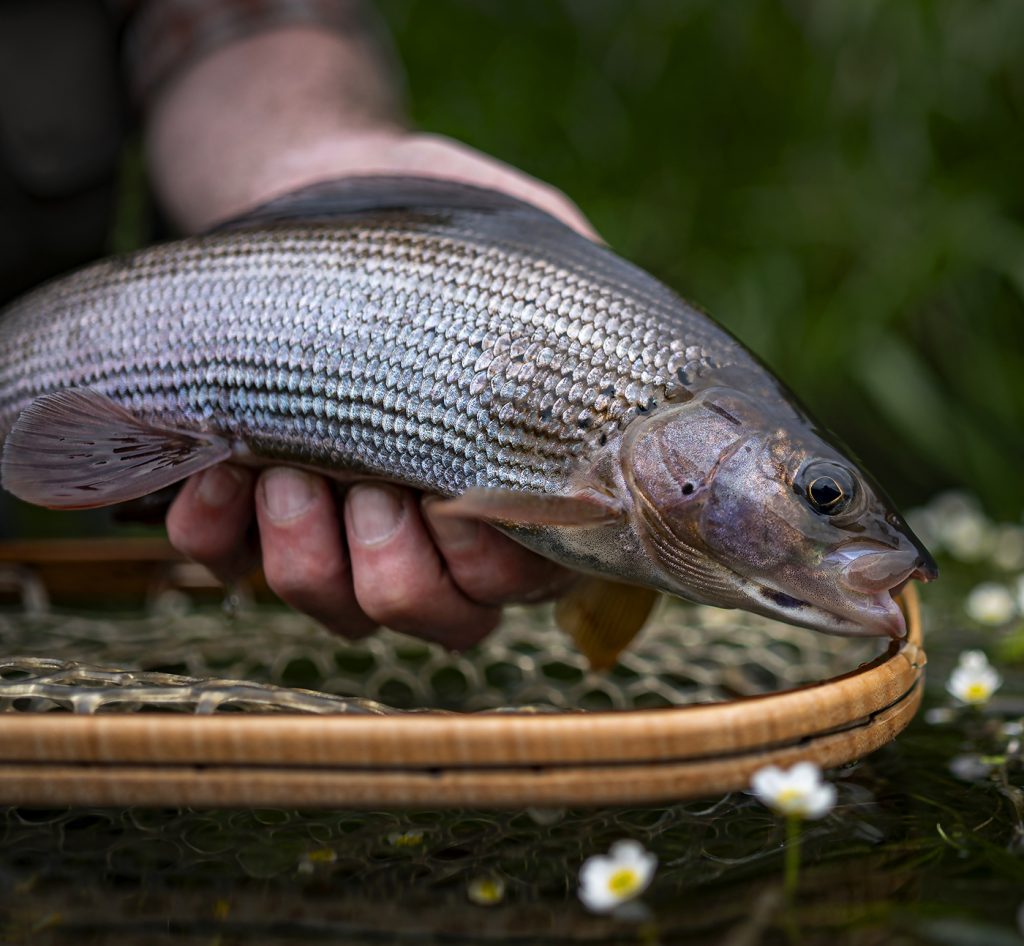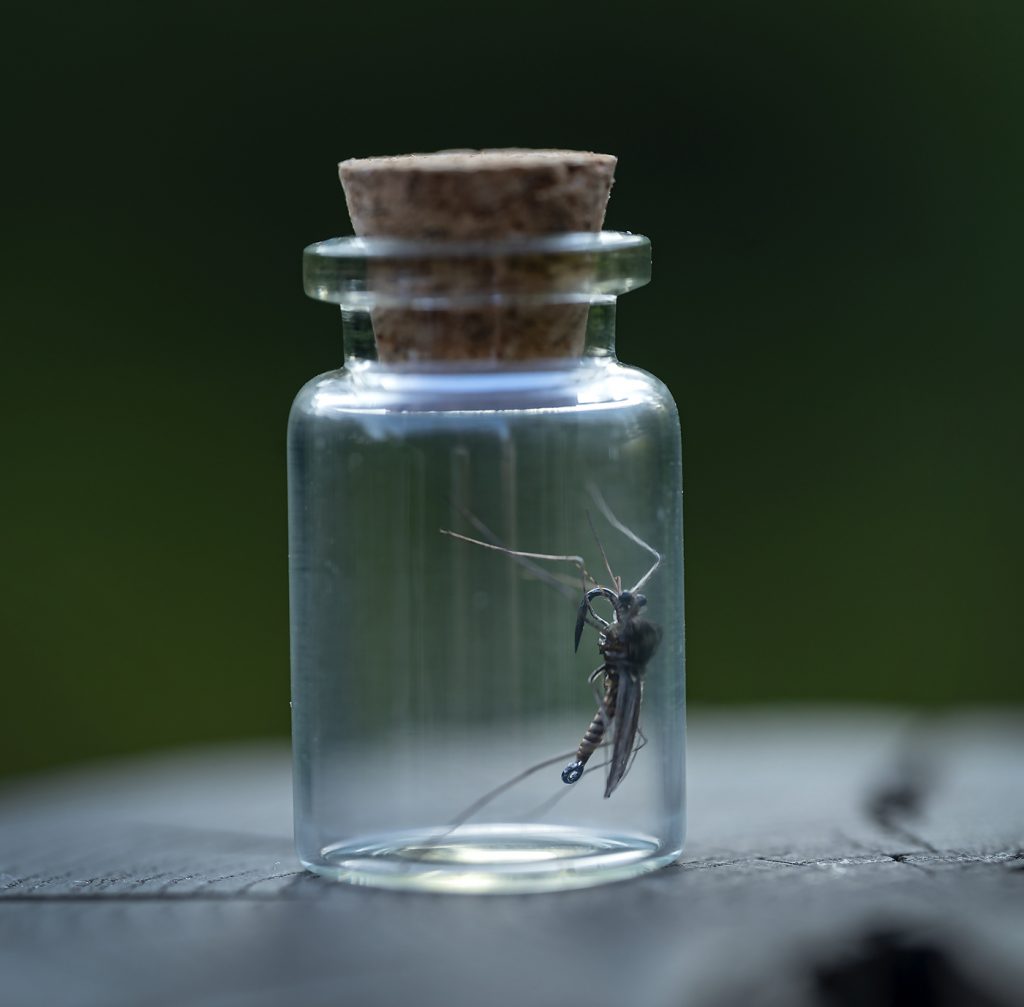
I suppose there are many of those – I think all fly fishers have them, in one way or another. One of mine is definitely midges, mosquitoes, knot in Swedish – whatever you call them. Some of them are really small, bite and will at one point get under your clothing. And when they’re out, they’re usually out in bi-zillions. There are others that don’t bite, but they cal still be a nuisance when they hatch, because they always do so in great numbers. They do however also produce some really interesting, good and not least challenging fishing. Trout like feeding on them. One can wonder since they’re so small, but the numbers make them a good meal for a trout. Trout also know (well, trout don’t know anything, but you know what I mean) that especially as emergers they are an easy meal.

The main challenge is the size. Midges and other small two-wings are usually small enough that exact imitation isn’t imperative. Size is everything. And it’s not easy fishing, hooking, let alone landing a trout on a size 22 hook. Really fine leaders are necessary and long ones are a definite advantage as well. On streams and rivers, the minute imitations are nearly impossible to see, even at short distances. A rise in the vicinity of where you think your fly is, is often the only tell tale sign. Rises can be incredibly slow and careful. A good sized trout can pole it’s nose through the surface so gently that it looks like a roach.
Still water presents an entirely different challenge. Trout don’t hold in one spot – they cruise around, rising here and there – some times everywhere, when the hatch is dense. In this scenario, you have two choices. Cast to a rising fish or cast and wait. Casting to rising fish is difficult. If you’re lucky and observant enough, every once in a while a trout rises on a regular interval, on a predictable course. This requires extremely careful and precise presentations. It’s a great challenge to take up, but definitely less effective than the waiting game. When you spot a trout rising to a midge, wait a while and cast your fly. Not to the exact spot where it rose, but somewhere close. And then leave it – waiting, waiting. And when you’ve waited a long time and lift the fly to cast it elsewhere, you usually miss the trout as it was just trying to snatch your lovely offering.

The leaders need to be fine – as fine as you dare, which of course requires you to be extra careful when fishing the fish. They also need to not float. Even the finest of leaders look like a one-inch steel wire when lying on a glass calm surface. I use a small dab of leader sink to sink the foot or so of leader, closest to the fly. This can, sometimes, sink the fly, but that’s a price I happily pay. Whether or not to use floatant is a matter of choice and the type of fly on the leader. An emerger should sit in the surface film, not on it. A dry should, obviously, sit on the surface. If you use a floatant, use very, very, very little of it. First of all, only a little is needed to float a small imitation, but the slightest of oil film on the surface is to be avoided.

Which fly to use? Well, it really doesn’t matter much as mentioned, but the size needs to be if not dead on, then close. We have a few films on our YouTube channel of good patterns.
Take a look at Håkan Karsnäsers Hatching Midge here:
Håkan’s home water is Hökensås Sportsfiske’s lakes and he fishes midge hatches most of the season.
Håkan’s Emerging Midge sports a little flash in the tail, which can help tricking the trout into taking your offering instead of the naturals.

Easy Spot Midge tied by Lars Chr. Bentsen.
This small parachute is a simple and easy pattern. Black is a good colour, byt I also carry some in a lighter colour (grey, light olive or something along those lines). The short, yellow wing makes it a little easier to see. Pattern by Peter Jepsen, Denmark.

Super Realistic Mosquito tied by Markus Hoffman.
It may be that exact imitation isn’t necessary, but sometimes, someone asks, “Why?” and someone answers, “Because I can…”. I think that’s what our friend from Hökensås Sportsfiske in Sweden, Marcus Hermansson-Thorvald says about this impressive imitation. When I first saw it, I genuinely didn’t notice the hook and thought that Morten had “just” photographed a midge. This is next-level fly tying, but I don’t think Marcus fishes this fly.

It’s September 1st and if you haven’t got really small stuff in your box, you need to sit down tonight. The really, small stuff is still important!
